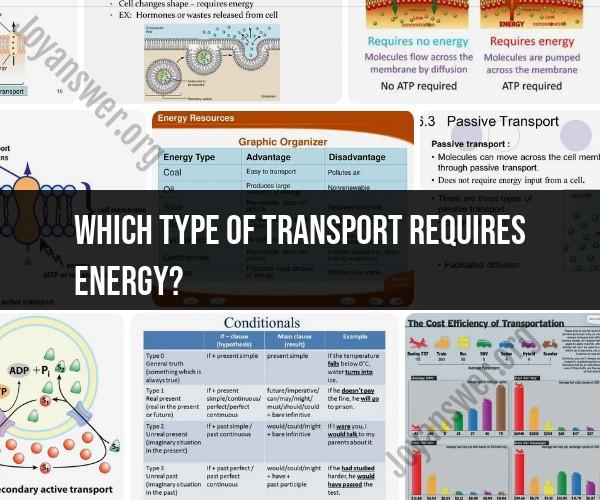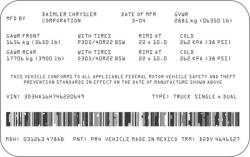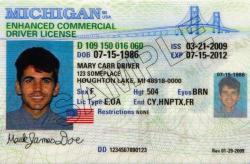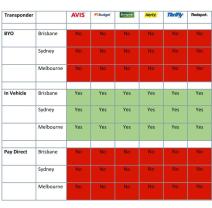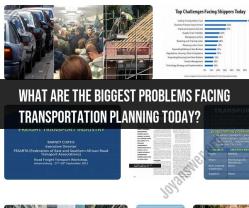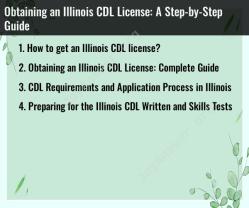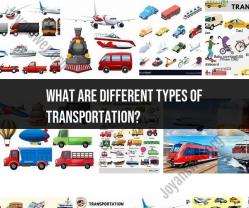Which type of Transport requires energy?
All types of transportation require energy to operate. Energy is needed to power the vehicles and move people or goods from one place to another. Here are some common modes of transportation that require energy:
Automobiles: Gasoline, diesel, or electric cars require energy to run. Gasoline and diesel cars use internal combustion engines powered by fossil fuels, while electric cars use electricity stored in batteries.
Bicycles: While human-powered, bicycles also require energy from the rider's muscles.
Motorcycles: Like cars, motorcycles typically run on gasoline or electricity, requiring energy to operate.
Trucks and Buses: Large vehicles used for transporting goods and people rely on diesel or electricity for power.
Trains: Both traditional locomotives and electric trains require energy to move along tracks.
Ships and Boats: Ships use various types of fuels, including diesel and heavy fuel oil, while some smaller boats may use gasoline or electric power.
Aircraft: Airplanes use jet fuel or electricity to generate thrust and lift, enabling flight.
Public Transit: Public transportation systems, such as buses and subways, require energy to operate and transport passengers.
Cycling: Even though human-powered, cycling still requires energy from the rider's muscles.
Walking: Human locomotion also consumes energy from the body, though it's generally the most energy-efficient mode of transportation.
In summary, whether it's a vehicle powered by fossil fuels, electricity, or human effort, all forms of transportation require energy to function. The type of energy source varies depending on the mode of transport and its design.
Types of Transport Requiring Energy: A Comprehensive Overview
Active transport is the movement of molecules or ions across a cell membrane against their concentration gradient. This means that the molecules or ions are moving from an area of low concentration to an area of high concentration. Active transport requires energy, which is typically provided by the breakdown of adenosine triphosphate (ATP).
There are two main types of active transport:
- Primary active transport: This type of active transport directly uses ATP to move molecules or ions across the cell membrane. An example of primary active transport is the sodium-potassium pump, which moves sodium out of the cell and potassium into the cell.
- Secondary active transport: This type of active transport uses the energy stored in an electrochemical gradient to move molecules or ions across the cell membrane. An example of secondary active transport is the lactose transporter, which uses the energy gradient created by the sodium-potassium pump to move lactose into the cell.
Active transport is used for a variety of purposes in biological systems, including:
- Maintaining the concentration of ions inside cells
- Absorbing nutrients from food
- Transporting molecules across the cell membrane for secretion or excretion
- Moving molecules and organelles within cells
Energy-Consuming Transport Mechanisms in Biological Systems
Energy-consuming transport mechanisms are found in all biological systems, from single-celled organisms to multicellular organisms. Some examples of energy-consuming transport mechanisms in biological systems include:
- The sodium-potassium pump: This pump is found in the cell membranes of all animals. It uses ATP to move sodium out of the cell and potassium into the cell. This creates an electrochemical gradient across the cell membrane, which is used to power secondary active transport.
- The calcium pump: This pump is found in the cell membranes of all eukaryotes. It uses ATP to move calcium out of the cytoplasm and into the endoplasmic reticulum and Golgi apparatus. This helps to regulate calcium levels in the cytoplasm, which is important for many cellular processes.
- The proton pump: This pump is found in the cell membranes of many different types of cells. It uses ATP to pump protons across the cell membrane. This creates an acidic environment in some cells, such as the stomach, and helps to drive secondary active transport in other cells.
- The muscle contraction cycle: Muscle contraction requires energy to move actin and myosin filaments past each other. This energy is provided by ATP.
- The transport of molecules and organelles within cells: The transport of molecules and organelles within cells is powered by ATP. For example, microtubules use ATP to move vesicles around the cell.
The Role of Cellular Energy in Different Types of Transport
Cellular energy is essential for all types of transport, including both passive and active transport. Passive transport does not require energy directly, but it does rely on the presence of an electrochemical gradient across the cell membrane. This electrochemical gradient is created by active transport, which requires energy.
Active transport requires energy directly to move molecules or ions against their concentration gradient. The energy for active transport is provided by ATP.
The amount of energy required for different types of transport varies depending on the type of transport and the distance that the molecules or ions are being transported. For example, transporting a molecule across a cell membrane requires less energy than transporting a molecule across an entire organism.
Conclusion
Energy-consuming transport mechanisms are essential for life. They are used to maintain the concentration of ions inside cells, absorb nutrients from food, transport molecules across the cell membrane for secretion or excretion, and move molecules and organelles within cells. Cellular energy, in the form of ATP, is required for all types of transport, including both passive and active transport.
